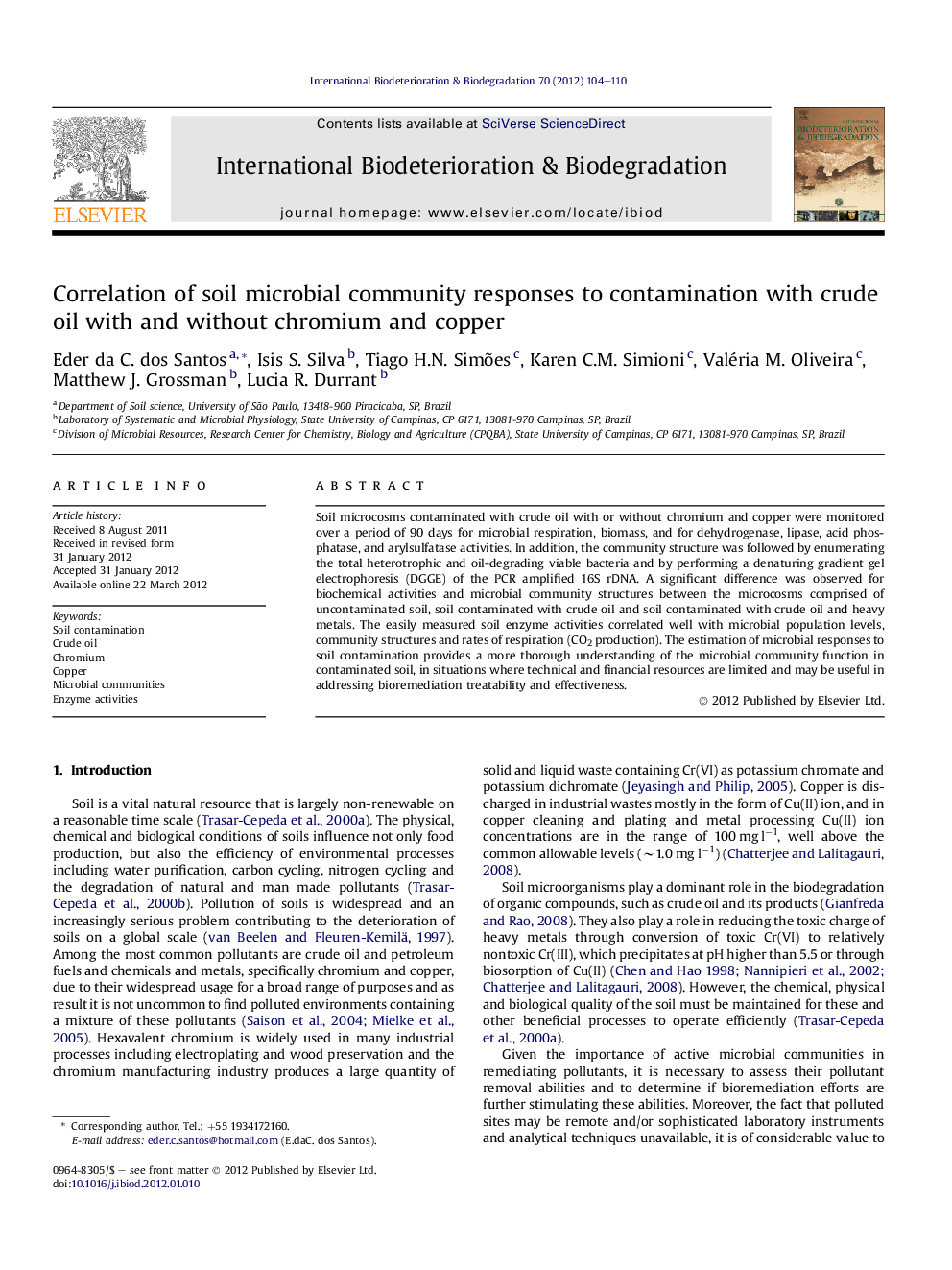| Article ID | Journal | Published Year | Pages | File Type |
|---|---|---|---|---|
| 4365144 | International Biodeterioration & Biodegradation | 2012 | 7 Pages |
Soil microcosms contaminated with crude oil with or without chromium and copper were monitored over a period of 90 days for microbial respiration, biomass, and for dehydrogenase, lipase, acid phosphatase, and arylsulfatase activities. In addition, the community structure was followed by enumerating the total heterotrophic and oil-degrading viable bacteria and by performing a denaturing gradient gel electrophoresis (DGGE) of the PCR amplified 16S rDNA. A significant difference was observed for biochemical activities and microbial community structures between the microcosms comprised of uncontaminated soil, soil contaminated with crude oil and soil contaminated with crude oil and heavy metals. The easily measured soil enzyme activities correlated well with microbial population levels, community structures and rates of respiration (CO2 production). The estimation of microbial responses to soil contamination provides a more thorough understanding of the microbial community function in contaminated soil, in situations where technical and financial resources are limited and may be useful in addressing bioremediation treatability and effectiveness.
► We evaluate the microbiology of soil contaminated with crude oil ± Cr and Cu. ► Microbial communities and activities differed depending on the type of contaminant. ► Differences in contaminants and levels were distinguished with simple enzyme assays. ► Use of simple assays allows for soil monitoring in low technology situations.
